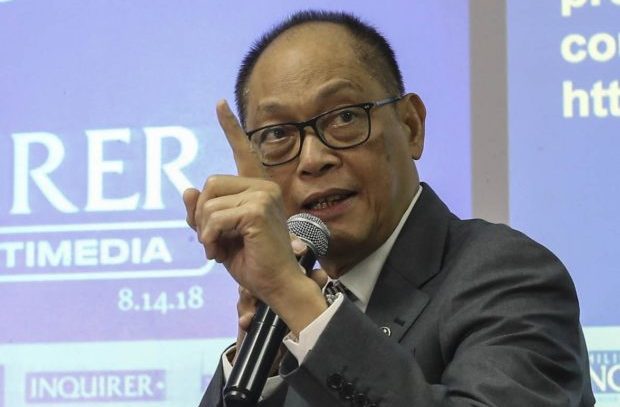BSP chief vows to sustain economic boom with cash

BSP Gov. Benjamin Diokno (File photo by EARVIN PERIAS / Philippine Daily Inquirer)
MANILA, Philippines — Philippine economic growth is expected to exceed 6% in the second quarter of this year and over the near to medium term horizon — a phenomenon that can only be sustained if fed with sufficient cash in the financial system.
Thus said Bangko Sentral ng Pilipinas Gov. Benjamin Diokno who doubled down on Wednesday on his vow to ease monetary policy in the country, along with a previously made commitment to cut banks’ reserve requirements to “single-digit levels” within his term of office.
“We expect the economy to grow much faster, so we might need additional liquidity,” he told reporters on the sidelines of the ceremonies celebrating the 26th anniversary of the central bank. “The reserve requirement ratio is really high. It doesn’t require one to be an Einstein to recognize that.”
The BSP is in the process of cutting bank reserves from 18% to 16% — a move that began in May and will be completed by the end of this month, effectively releasing an estimated P200 billion of previously immobilized funds into the domestic economy.
“We want to bring [the level] down to single digits by the end of my term [in 2023],” he said, explaining that other countries require their banks to keep only 1% of their deposits as liquid reserves.
Article continues after this advertisement“I’m not saying we’ll go to 1%, but definitely single digits,” he said. “Each percentage point [reduction] is [equivalent to] P100 billion.”
Article continues after this advertisementDiokno said central bank planners expect the Philippine economy to have grown by at least 6% in the second quarter, after slipping to 5.6% in the first three months of the year due to a prolonged national budget impasse that resulted in slower government spending.
He explained that even just reducing the reserve requirement ratio to the high single-digit level of 9% from current levels would already provide the economy with an adrenalin rush of liquidity estimated to be around P700 billion — funds that banks would release as loans to productive sectors of the economy which, in turn, would create more jobs and fuel consumption.
“The reserve cuts are still ongoing and, as you can see, there’s no turbulence in the economy that’s happening. The foreign exchange rate is stable,” he said, extolling the virtues of the current wave of monetary easing. “It was a smart move to pre-announce the moves because the banking system knows what to expect, as opposed to having a surprise 100-basis point cut.”
Diokno said regulators saw that the financial system was indeed suffering from tight liquidity, which was prompting local banks to raise cash for their lending operations by issuing debt instruments in recent months.
The BSP chief said that banks were “behaving” by not speculating against the peso.
“They won’t need to float as many debt instruments with the [future] cuts in the reserve requirement] because they’ll have the liquidity they need,” he said. “We have a lot of policy space, considering the global trend of [monetary policy] easing. Just be patient. We’ll get there.”
(Editor: Alexander T. Magno)